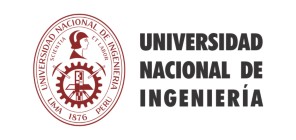
What is the water in Peru contaminated with?
Bacteria that grow due to improper handling of water or naturally occurring chemicals in the jungle soil that leach into groundwater. Chemicals include trace elements and heavy metals, which are especially harmful for pregnant women, infants and young children, and have been associated with cancer. Volcanoes in southern Peru are known to contaminate water with arsenic; up to 20 parts per million have been recorded in water from this region, 2000 times more than the recommended WHO limit of 10 parts per billion.
What solutions are you working on?
Because the sun’s radiation isn’t constant, we are using solar power to generate electricity and then using this to switch on lights that activate our photosensitive nanomaterials. In this way, we have generated an effi cient and consistent method to remove water contaminants and prevent bacterial re-growth.
The university, through a project funded by InnóvatePerú-MIDIS, recently sent some prototype fi ltration plants to the jungle that can treat up to nine cubic metres of water per day. They are totally autonomous, as they can generate their own power and self-clean, and very robust. They have been made to last for 20 years and have been designed so they can be remotely monitored from our laboratory in Lima.
What will be the next steps?
In December, we will start to evaluate the performance of the new plants. If the results are positive, we will look to roll out the technology. Our aim is to install devices based on our technology on water transportation trucks or in people’s homes to improve their access to safe water.
We are also very aware that any solution has to be costeff ective. In cities the average cost of water is 80 cents per cubic metre, whereas in peri-urban and rural areas it is nearly six times higher, even though the population in these areas is poorer and less able to aff ord it. Our technology can generate safe water in these areas for as little as US$1.8 per cubic metre. This is a golden opportunity to build a stronger, healthier, and more equitable society.
What do you like most about your work?
What is most important to me is to generate technologies that will be utilized. It is extremely satisfying to see that something we have developed can improve the lives of so many people, and not just in Peru but potentially also in many other countries in which access to safe and aff ordable drinking water is limited.
What are the main challenges when conducting research in Peru?
Research and development (R&D) drives economic growth yet in Peru, R&D expenditure is only around 0.1% of GDP, five and ten times lower than in neighbouring countries Argentina and Brazil, respectively. Decision makers need to see this ‘expenditure’ as an investment in order to increase productivity, create new jobs and solve national challenges.
In the last 10 years there have been great improvements: research funding sources have been established, there are more opportunities for students and staff to travel abroad, and research career pathways are being formalized. This will help to reduce the likelihood of the best scientists emigrating. However, a lot more needs to be done.
How can these challenges be overcome?
In addition to committing more funds to R&D, initiatives are needed to improve the attractiveness of careers in research. We need to not just train new generations of researchers but support them afterwards by providing more opportunities for research. Students are now required to carry out research projects as part of their degrees, but this is a problem because there are so few people doing research. The numbers of both students and professors at the university have stagnated. The average age of university staff is close to 60, we need new blood.
State universities are the government’s research arm and should be nurtured to provide novel technological solutions to our country’s challenges and transform university-based research into innovative products. Our work demonstrates how basic research can be applied to improve the quality of life of millions of people and be commercially viable.


